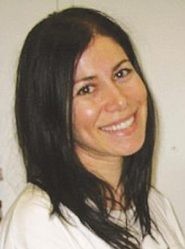More like a flashing sign
sanctuary cities
The older I get, the more I understand about how painful a place the biblicalir miklat, the city of refuge or sanctuary city, was.
According to seferBamidbar, there were six of them throughout the land, a place for people who accidentally killed someone, to seek safe haven from the possibility of avenging relatives of the person whose blood was spilt. The law thus acknowledged the human emotion of anger as a response to a murder.
A few years ago, a pest exterminator in Jerusalem made the error of leaving behind a pail of pesticides in an apartment he had worked in. The results of his error were fatal. I already felt terrible when reading the article, but I gasped when I saw his photo. I too had used his services in my Jerusalem apartment; he was the nicest, warmest guy. That’s when ir miklathit. Then again, this past week.
As the devastating story of the 10 beautiful teens who were swept to their deaths by a flash flood in southern Israel unfolded, it tore at your heart. But for a moment I wept for the head of school in whose care these kids were entrusted, who will obviously carry this tragedy in his heart and on his shoulders until his dying day.
This was the congregation of anir miklat.Otherwise good, upstanding, even possibly exceptional citizens or leaders, whose fate fell to rob someone of his or her life or, in this case, lives.
In a country that unfortunately needs to cope with terrorism and sustains losses due to it, as well as with wars, the thought of 10 beautiful teens being taken so casually by mother nature seems even more tragic. We can be prepared for terrorists in a café or at your door, but then mother nature comes and wipes a minyanof teens away.
Why were the kids were allowed to enter the wadiin torrential rains, with warnings of flooding? Any rookie hiker in Israel, knows that when the narrow dry desert ravine fills with rain water, you stay out.This was beyond a case of the handwriting on the wall. More like a flashing sign.
Of course there are tragic stories of freak accidents of nature that were unpreventable. Had the kids been standing on a cliff, overlooking the wonder of an arid ravine suddenly transformed into a rushing waterfall, due to the force of flooding, and a wave suddenly rose so high as to sweep them away, a case could be made for a freak accident of nature. In this case, with the knowledge so far at hand, the choice to bring kids into a dry wadi-ravine with flood warnings in place seems nothing short of reckless. The consequence was unintended.
People speak of the Israeli culture of semoch— literally, “you can rely on me” or “trust me,” essentially “I’ve got this,” in response to someone expressing anxiety that is often taken to mean weakness. But tragically, written by their blood, it’s a call for some humility, responsibility and caution within the Israeli culture.
Last week was the holiday of Lag b’Omer. Traditionally, in Israeli, it’s a night celebrated with bonfires lit across the country. But the weather was dry and windy. Fire and police issued a statement calling for Lag b’Omer fires to be suspended this year.
Considering the proximity to last week’s tragedy, this act of public policy, which models responsibility and awareness of the constellation of factors in making safe choices, should be commended. In light of the tragedy, the symbolism of these two powerful elements of nature — fire and water — dictated the right thing to do.
Above all, my heart is with the grieving families.
Copyright the Intermountain Jewish News

 63.0°,
A Few Clouds and Breezy
63.0°,
A Few Clouds and Breezy 




